Service dogs and independence as a path to accessibility.
Service dogs and independence as a path to accessibility.
The range of functions and abilities of dogs trained to make people's lives easier goes beyond the fluffy labradors trained to guide visually impaired people.
Thinking about facilitating and improving the quality of life of people with disabilities - physical, mental or psychological disorders - many dogs are trained, nowadays, for the most diverse functions!
To give you a better idea of how these animals act and, mainly, generate autonomy to people with disabilities, here is a list of some types of service dogs with their main functions: Guide dog (for people with visual impairment) , Hearing dog (for people with hearing impairment - they are trained to alert about important sounds of everyday life such as fire alarms, bells, oven alarm, telephone rings, among others) , Alert dog for diabetics (trained - by nose - to alert the guardian when the level of glucose in the blood is low, besides fetching medicines and objects and helping the person to get up after a fall) , Seizure Alert Dog (for people with epilepsy - these dogs are trained - also by smell - to identify and alert when a seizure is about to happen) , Seizure Response Dog (also for people with epilepsy - they are trained to react in a certain way when witnessing a seizure, (also for people with epilepsy - they are trained to react in a certain way when they witness a seizure, such as fetching medicine, standing next to the person, or calling for help), therapy dogs (working in nursing homes, hospitals, and institutions for people with intellectual disabilities and autistic spectrum - they help in socialization and inclusion) , Mobility Service Dogs (trained to help people with organic or motor deficiencies in the most varied day-to-day activities).
And it is precisely this last group of dogs, the mobility service dogs, that we will talk about today! Some of the most common questions when the subject is this one are: How does this whole process work for a dog to become a service dog? What functions is it capable of?
Let's go in parts: there are associations that specialize in the whole process of training and delivering these animals, and the journey begins much earlier than we think!
The preparation begins even before the birth of the puppies, when the genetic selection is made and the best dogs (especially in behavioral issues) are chosen for reproduction. The puppies are born in the institutions and, soon after the first vaccines, they start living with the so-called socializing families.
The puppy raisers are people who volunteer to help in this work. This socialization period is an essential part of the animal's development, since it is when the animals learn basic commands and are desensitized to any and all types of environment.
This stage lasts between one and two years and is fundamental, for the animals must become accustomed to different places and stimuli, since when they are delivered to their respective owners they will be exposed to the most varied situations.
After the time with the socializing families, the puppies are returned to the institutions. In order to learn the daily tasks that they will perform with their future owners, the animals are directed to a more specific training, lasting from six months to one year.
It is important to say that, unfortunately, not all doguinhos make it to this stage of training! After socialization, they undergo a behavioral and health test, and if they show inappropriate reactions, unsafe or aggressive behavior, or health problems, they are dismissed from service dog training.
In these cases, it is up to the institution to decide if the dog will be directed to another type of work more suited to its personality (a therapy dog, for example) or if it will be put up for adoption - it may be adopted by the socializing family.
In this way, dogs that are approved and go for training learn functions such as: Picking up and delivering dropped items, Opening and closing doors and drawers, Pulling laundry baskets, as well as helping with socks, shoes, and coats, Pushing a manual wheelchair a short distance, Turning lights on and off, Taking clothes out and putting them in the washing machine.
Finally, after a long journey, the doguinhos are delivered to their new owners who, in turn, also need to go through a selection process for analysis of suitability to have a service dog.
Now you know how man's best friend can generate independence and thus facilitate accessibility, on a daily basis, for thousands of people limited by society in some way.
-
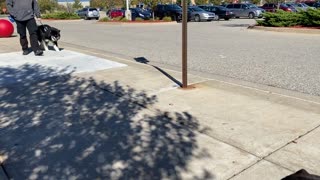 8:50
8:50
lawschoolthruaservicedogseyes
3 years agoService Dog: More Public Access With Wato!
79 -
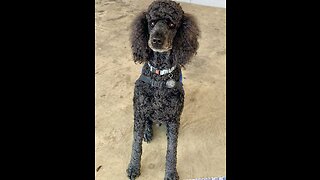 2:29
2:29
misfitsandrescues
1 year agoService Dog obedience. Off leash heeling , sit, speed,pickup items, loading up and meeting strangers
326 -
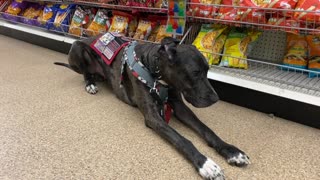 6:36
6:36
lawschoolthruaservicedogseyes
3 years agoService Dog: Public Access Shopping During Covid-19
108 -
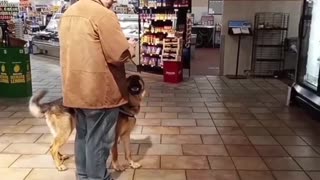 1:21
1:21
Trentonpage1998
4 months agoService dog in public!
21 -
 9:46
9:46
Samhzy
2 years agomy service dogs tasks
261 -
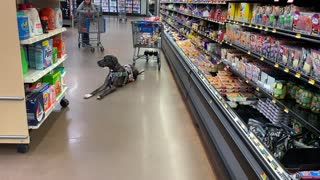 0:26
0:26
lawschoolthruaservicedogseyes
3 years ago $0.18 earnedService Dog: Public Access Shopping During Covid Stuffs
536 -
 19:51
19:51
American Standard K9
1 year agoConnecting Heroes with Service Dogs
16 -
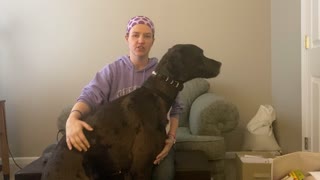 11:53
11:53
lawschoolthruaservicedogseyes
3 years agoService Dog: The Gear We Use
1.23K -
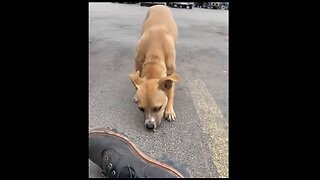 0:59
0:59
HaloRock™
4 months agoEarning Trust From A Dog That Was Abandoned At A Truck Stop
561 -
 0:07
0:07
lawschoolthruaservicedogseyes
3 years agoService Dog: WEIRD in Public Access
1041